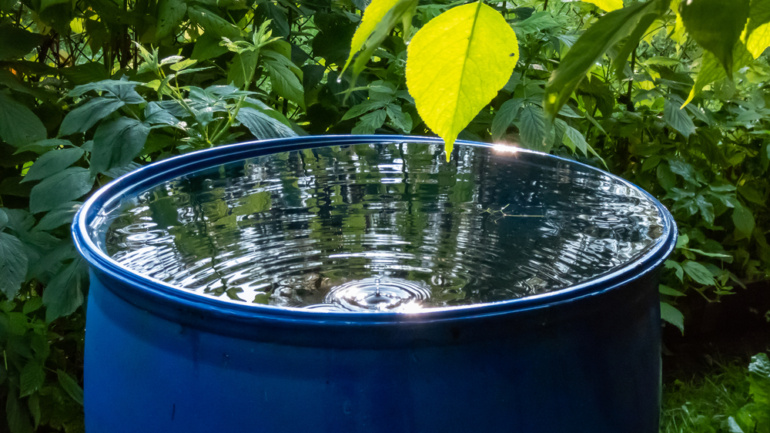By Rose Delaney, Staff Writer & Researcher for Save The Water™ | October 16, 2018
To the delight of clean water enthusiasts, on September 19th, Governor Tom Wolf of Pennsylvania signed an executive order to establish a per- and polyfluoroalkyl substances (PFAS) action team.1
What Are PFAS?
PFAS are artificial chemicals that have been used in commercial products on a global scale since the 1950s. Specifically, various products such as cosmetics, water-repellent clothing, and products that resist grease, water, and oil contain PFAS. Exposure to PFAS poses significant health risks to humans including various cancers, kidney disease, and birth defects.2 PFAS causes and consequences are explained more in Save the WaterTM staff writers, Suraj Rajendran’s article on health issues linked to PFAS exposure in adult and adolescent populations here,3 and Erin Fee’s overview of PFAS in the “national spotlight” here.4
PFAS Action Team in Pennsylvania Will Address These Artificial Chemicals That Harm Humans and the Environment.
In terms of PFAS levels, Pennsylvania is considered a “highly contaminated” state.1 Governor Wolf recognizes the dangers PFAS chemicals pose not only for his home state of Pennsylvania, but for the United States as a whole. He has called the accumulation of the harmful man-made chemicals a “national concern.”1 Many North American companies reduced the use of PFAS substances in the early 2000s. Nonetheless, the harmful chemicals continue to pose a risk to the health of Americans across the country.
According to Water Online, responding to the PFAS contamination found in local residents’ drinking water, Governor Wolf stated, “our residents deserve clean air, pure water, and to know that the environment they live in is safe.”1
Contaminants are harmful chemicals that pose a health risk to the environment and humans. While Governor Wolf’s action team strives to eradicate all emerging contaminants, they cannot succeed without help from federal agencies, such as the Department of Health and Human Services and the Environmental Protection Agency (EPA.) Last month, Governor Wolf formally asked for federal assistance to combat PFAS.1
Disastrously and Dangerously High levels of PFAS in both Pennsylvania and Michigan.
Pennsylvania is not the only state with PFAS problems. Michigan has also reported over 30 PFAS contaminated sites. The levels of PFAS detected in the waters across Michigan have become alarmingly high. Due to PFAS contamination, the Michigan Department of Health and Human Services (MDHHS) issued a “Do Not Eat” Fish advisory in early September for all fish in the Huron River and several bodies of water in various counties:
Livingston,
Oakland,
Washtenaw,
Wayne, and
Monroe Counties near Detroit.5
According to Angela Minicuci, a spokesperson for the MDHHS, consuming PFAS contaminated fish can have negative consequences:some of the potential consequences presented by the consumption of PFAS contaminated fish,
- “[negative] “impacts associated with growth,””
- behavior problems in young children,
- issues associated with women getting pregnant,
- effects on hormones and cholesterol levels, and
- potential increases with certain types of cancer.”5
More importantly, Mlive has described the PFAS contamination spreading across Michigan as nothing short of “astronomical.”6 For example, the level of contaminants found in the creek that feeds into the Huron river and its surrounding lakes is “more than 450 times what the state allows in surface waters and 78 times the lifetime health advisory for human consumption.”6
On September 20th, state officials identified one industrial wastewater company in Wixom as a major contaminator. Now, the city of Wixom is collaborating with the company to reduce the contaminants produced. However, as one official stated, “it’s not something they can just turn a switch on overnight.”6
PFAS Reduction: Effective Government Action
Fortunately, state governments are tackling the ongoing health challenges posed by PFAS contaminants. For example, in March, Washington became the first state to ban the use of PFAS chemicals in firefighting foams.7
Furthermore, on September 26th, the Senate held a hearing on the national health crisis caused by PFAS drinking water. This hearing was part of a bipartisan effort to urge the EPA to regulate PFAS across the United States.8 As Congressman Dan Kildee (D-MI), a co-sponsor of the House Bill, emphasized, “We cannot underestimate the seriousness of PFAS contamination in Michigan and across the country.”8
In addition, U.S. Senators Gary Peters (D-MI), Debbie Stabenow (D-MI), and Marco Rubio (R-FL) introduced bipartisan legislation to hold several federal agencies accountable for addressing PFAS contamination on military bases across the U.S.9 Also, they strongly support the PFAS Accountability Act (S. 3381), which sets non-negotiable deadlines and reporting requirements for cleaning up PFAS contamination at all federal facilities across the country, including active and decommissioned military bases.9
The future looks bright for all anti-PFAS activists across the U.S., as political influencers and the general public continuously demonstrate their commitment to reducing these harmful chemicals.
Achieving PFAS Elimination : What can you do?
- Attend “Listening Sessions” in your local area if available. “Listening Sessions” have been established and implemented by the EPA for communities affected by PFAS across the country.9
- Reach out to your local government representatives to ensure the public’s outcry against the harmful contaminants is taken seriously, your voice is heard, and that justice prevails.
- Ensure everyone in your community is aware of the harm caused by PFAS, to humans,animals and the environment alike, by giving information such as this article to those who may not be aware of the dangers posed by the contaminants.
- Consider donating to Save the WaterTM.
References
- Water Online. September 21, 2018. “Governor Wolf Takes Executive Action to Address PFAS Concerns and Protect Pennsylvanians.” Water Online. https://bit.ly/2AdOUk8
- Agency for Toxic Substances and Disease Registry. August 13, 2018. “Per- and Polyfluoroalkyl Substances (PFAS) and Your Health.” Agency for Toxic Substances and Disease Registry. https://www.atsdr.cdc.gov/pfas/index.html
- Suraj Rajendran. October 27, 2016. “PFAs: Toxins for 6 Million People.” Save the Water.™ https://savethewater.org/2016/11/07/toxin-6-million-people/
- Erin Fee. September 17, 2018. “PFAS or per- and polyfluoroalkyl substances in the National Spotlight.” Save the Water.™ https://savethewater.org/2018/09/17/pfas-polyfluoroalkyl-substances-national-spotlight/
- Mary Ellen Geist. September 5, 2018. “Do Not Eat” Fish Advisory extended to Lake Erie.” Great Lakes Now. https://www.greatlakesnow.org/2018/09/pfas-all-fish-in-michigans-huron-river-unsafe-to-eat/
- Paula Gardner. September 24, 2018. “‘Astronomical’ PFAS Level Sets New Michigan Contamination Milestone.” MLive. https://www.mlive.com/news/index.ssf/2018/09/astronomical_pfas_contaminatio.html
- Alex Formuzis. September 24, 2018. “Congress Poised to Act to Reduce Major Source of PFAS Chemicals in Drinking Water.” The Environmental Working Group. https://bit.ly/2NMhsVE
- Alison Cagle. September 27, 2018. “Senate Hears Testimony on Regulating PFAS Contaminants.” Sierra. https://www.sierraclub.org/sierra/senate-hears-testimony-regulating-pfas-contaminants
- Water Online. August 24, 2018. “Peters, Stabenow, Rubio Introduce Bipartisan Legislation to Hold Federal Agencies Accountable for Addressing PFAS Contamination at Military Bases across the Country.” Water Online. https://bit.ly/2Es64yO





